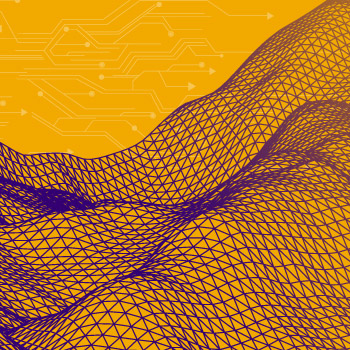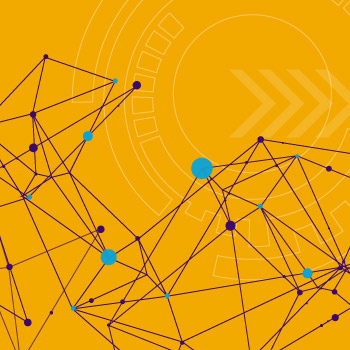Search for academic programs, residence, tours and events and more.
A digital strategy provides clear and realistic expectations of technology, services and operational practices, and ensures that the solutions we implement are approached purposefully and meet the needs of the communities that we serve.
This will enable individual and institutional success, help us to understand the potential of digital technologies and associated services, prioritize our investments, and readily apply them to better serve our diverse community.
Learn more about how we developed our digital strategy below or download the PDF.

Through engagements with the community and work within the Digital Strategy Working Group, three key priorities were identified as being the most important to our diverse community and imperative to our strategic success. These themes are:
Our five-year roadmap outlines projects that will change how students, faculty and staff work, learn, teach and research at Laurier. As funding, opportunities and priorities change, new projects may be added or removed from this timeline to help us achieve the goals set out in Laurier’s Digital Strategy. Projects listed below are organized based on their current status and are adjusted annually to reflect current projected timelines.
Projects with an * indicate additional projects added to our roadmap based on institutional priorities.
New Computer Lab Strategy:
Initiation: Q1 2022
Completion: Q3 2023
Wilfrid Laurier International College (WLIC) Implementation Project:
Initiation: Q3 2021
Completion: Q3 2023
*Alert Notification System Implementation:
Initiation: Q2 2023
Completion: Q3 2024
*MyLS Email Migration:
Initiation: Q1 2023
Completion: Q2 2024
*Digital Strategy Report (2024):
Initiation: Q2 2023
Completion: Q4 2023
*Indigenous Identity Project:
Initiation: Q3 2023
Completion: Q4 2024
*FGPS Admissions Project – Phase One:
Initiation: Q3 2023
Completion: Q3 2024
*International Tuition Deposit Automation - Phase One:
Initiation: Q1 2024
Completion: Q3 2024
*Milton Audio Visual Technology:
Initiation: Q2 2023
Completion: Q3 2024
Data Warehouse Replacement:
Initiation: Q1 2023
Completion: Q3 2024
Laurier Wi-Fi Expansion: Residence - Phase One and Two:
Initiation: Q1 2023
Completion: Q3 2024
Laurier Wi-Fi Expansion: Campus - Phase One and Two:
Initiation: Q1 2023
Completion: Q3 2024
*NetSuite Software Implementation for Bookstore:
Initiation: Q3 2022
Completion: Q3 2023
Network Access Control:
Initiation: Q4 2022
Status: On Hold
Enterprise Customer Relationship Management Strategy and Implementation:
Initiation: Q3 2022
Status: On Hold
Service Management Solution:
Initiation: Q4 2023
Status: On Hold
E-Curriculum Vitae:
Initiation: Q3 2023
Status: On Hold
In 2023, we will start setting our baseline for each of the following key performance indicators (KPIs). These KPIs will serve as an initial starting point that we will use to track our progress. Additional KPIs may be added in subsequent years.
|
Metric |
Description |
Baseline (2023-2024) |
Status (2024-2025) |
|---|---|---|---|
|
Digital Solutions |
Percentage of Digital Strategy projects completed. |
Percentage of Projects Completed: 20% |
Percentage of Projects Completed: 35% |
|
User Satisfaction |
Satisfaction with digital solutions and self-service offerings. Rated on a scale from 1 (needs improvement) to 5 (very satisfied). |
Researchers: 1.7/5 Staff/Faculty: 4.8/5 Students: N/A* |
Researchers: 3.2/5 Staff/Faculty: 4.4/5 Students: 3.9/5 |
|
Consultations |
The extent to which ICT governance prioritizes diversity, inclusion and responds to feedback. Rated on a scale from 1 (needs improvement) to 5 (very satisfied). |
Diversity on Governance Committees: 4.3/5 Inclusion Mechanisms: 4.5/5 Responsiveness to Feedback: 4.3/5 |
Diversity on Governance Committees: 4.1/5 Inclusion Mechanisms: 4.1/5 Responsiveness to Feedback: 4.4/5 |
|
Data Connections |
Percentage of data sources connected to the central data warehouse. |
Amount of Data: 1.2TB Number of Data Sources: 3 Number of Reports/Dashboard Views: 6,036 |
Amount of Data: 169.59 GB Number of Data Sources: 6 Number of Reports/Dashboard Views: 6,091 |
|
Training and Upskilling |
Percentage who complete cybersecurity training. |
Staff & Faculty: 92% |
Staff & Faculty: 77% |
Our Digital Strategy has overarching and integrated themes across all strategic areas of the Laurier Strategy and will be essential to helping the university be successful in achieving its objectives.
Each of strategic priorities in Laurier’s Digital Strategy were selected for the significance of their impact on our university community and specific activities that will be necessary for Laurier to achieve its broader objectives of thriving community and future-readiness.
Achieving these objectives will require support from leaders and a collaborative effort within the Laurier community to implement projects and initiatives that work towards these goals. It will also require proper project prioritization and an understanding that we have limited resources and must work collectively to ensure an appropriate balance between enterprise-level solutions and services that serve business units and/or functional needs.

The Digital Strategy Working group is made up of diverse leaders from across the university that represent various strategic priorities of the university. The group meets bi-weekly to discuss current priorities, work planning and actions required. Sponsors are provided a monthly report detailing the progress that have been made towards developing our digital strategy.
Our Digital Strategy will provide a shared vision to enhance teaching, learning, research, administration, and service through sustainable digital innovation for Laurier and for our community of partners. In developing our approach, the Digital Strategy Working Group has identified a series of values that will drive its development.
Through this strategy we will: